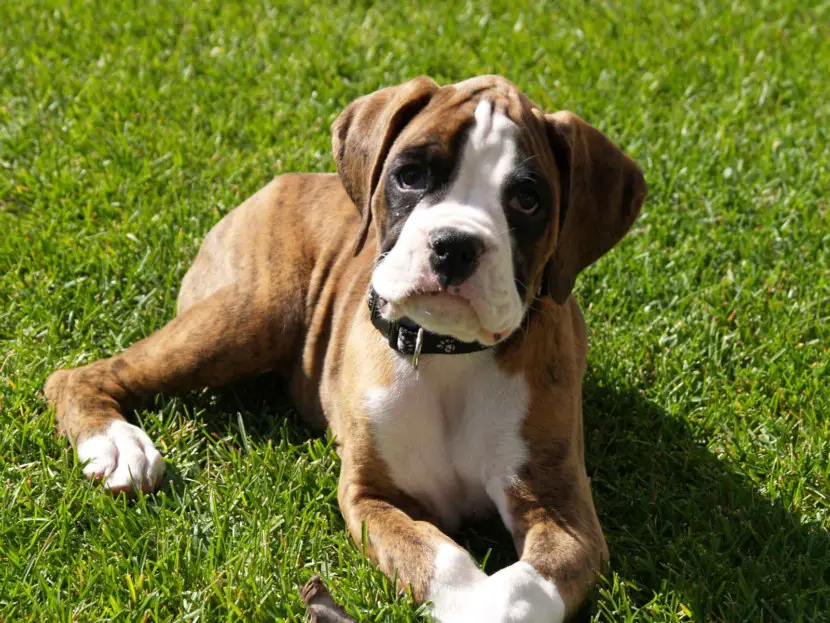Boxer training begins from the moment the puppy appears in the house.

From 2 months you can start with the commands:
- SIT
- WATCH ME
- DOWN
- STAY
- WAIT
- COME
- OFF
- DROP IT
- LEAVE IT
- NO
- HEEL
- HANDLE YOUR BUSINESS
- TAKE IT
- BED
- LEASH
- LAP
- SPEAK
- QUIET
- SHAKE
- CAR
- BELLY
And by 6 months, the baby is quite capable of mastering them.
Don’t let your puppy do what you won’t allow an adult dog.
Spend as much time with the boxer as possible, walk, invent new games, explore the area, swim.
The puppy learns only in the game. Classes should not be long (preferably several times a day for several minutes). Correct actions are rewarded with tasty treats or praise. No punishments are used.
From 6 months you can start systematic training on the site. Choose your instructor responsibly. If he uses harsh methods, it is better to look for another specialist.
Make every walk interesting. Strengthen the learned skills, teach your pet tricks. You can devote 10 minutes a day to establishing contacts with other dogs, devote the rest of the time to each other. Train your boxer to ride public transport, walk-in crowded places. Add variety to your walking routes. With a 10-month-old boxer, you can start running cross-country, from 12 months you can connect a bike.
At 18 months, a boxer can master a wide range of professions: nanny, security guard, protector, investigator, or rescuer. The dog tries to fulfill any task with dignity.

The boxer is often stubborn. But if you are persistent enough, restrained, and patient, you can teach your pet anything. Breakdowns and screams will not lead to anything good – the dog will perceive this as weakness. The main thing when training a boxer is self-confidence and again patience.
From time to time, the already learned knowledge refreshes the boxer’s memory.
In no case, you punish the dog when it comes up to you on command. Even if a terrible crime was committed before. The command “To me” should be associated only with positive emotions.
Do not reward the boxer’s attempts to fight other dogs – this can lead to serious problems later on.

A male boxer is more masculine and stubborn than a female. He is prone to fights, is more difficult to learn, and is able to run away after the “bride”. The female is softer, more flexible, and cunning learns easier.
Boxers are more willing to protect you in the street “showdown” than to protect property, but they are also easy to train to protect. If you plan on making your pet a guard or bodyguard, don’t let it hang out with strangers. But in no case use “your” in the role of an intruder, even in the game.
